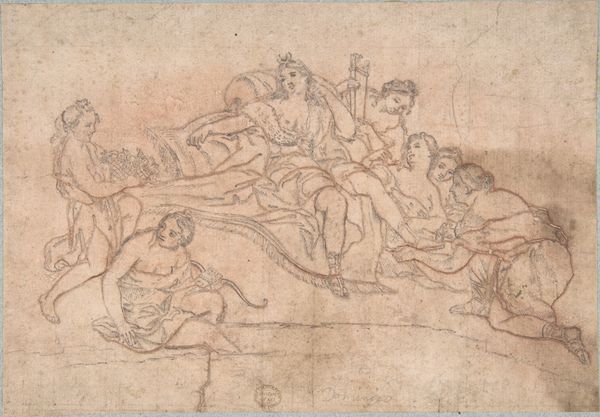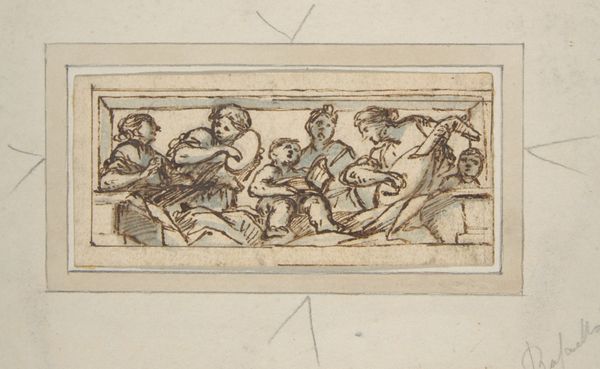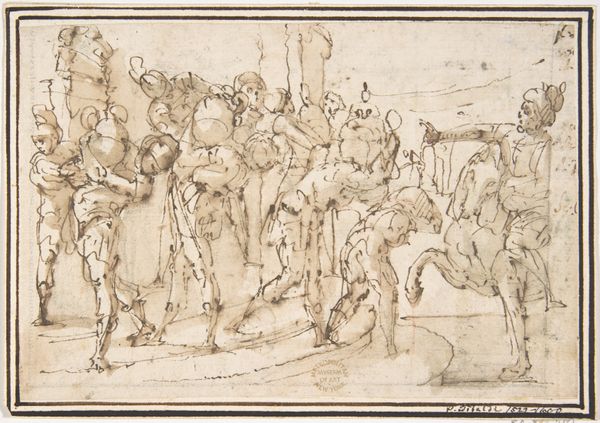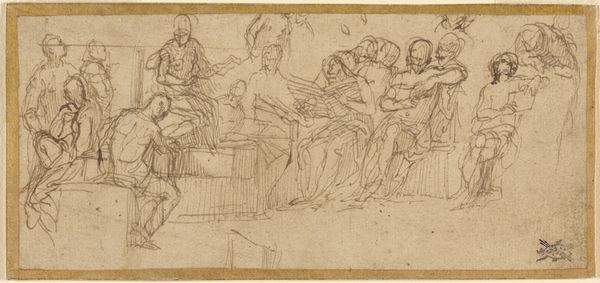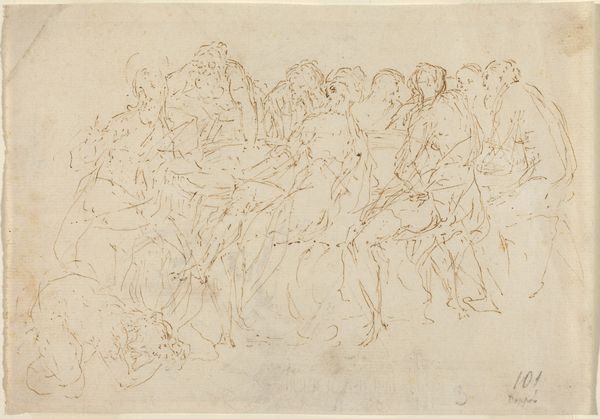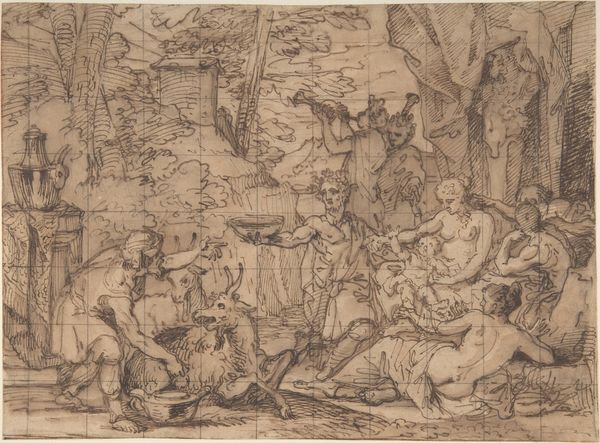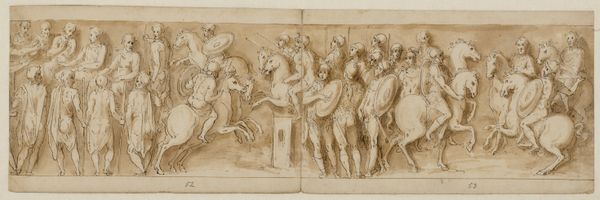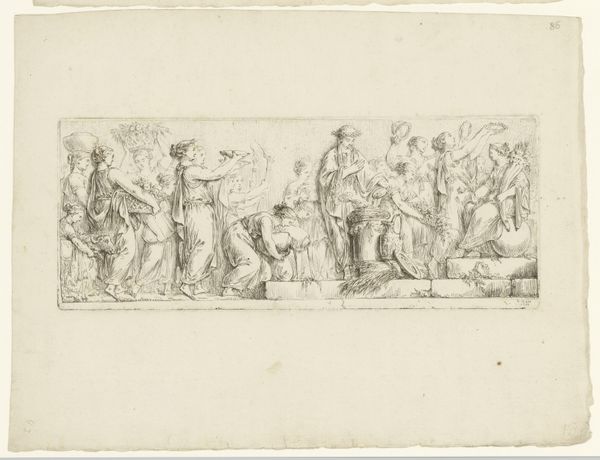
drawing, print, paper, ink
#
drawing
#
ink drawing
#
allegory
#
narrative-art
# print
#
figuration
#
paper
#
11_renaissance
#
ink
#
history-painting
Dimensions: 5 3/8 x 14 1/16in. (13.6 x 35.7cm)
Copyright: Public Domain
Curator: This ink drawing, "Allegory of Penance and Death," is attributed to Pietro Testa, dating somewhere between 1612 and 1650. What is your immediate impression? Editor: Chaotic, wouldn't you say? A densely populated composition, with a strong linear emphasis that gives it an almost frenetic energy. Curator: Precisely. The swirling lines create a dramatic effect, certainly indicative of the Baroque sensibilities that Testa embraced. Let’s consider its structure. Editor: Okay, there's a clear division, a spatial articulation between death, penance, and potentially salvation. The stark contrast between skeletal figures on the left and those, I assume, seeking absolution on the right. Curator: An interesting observation that leads us into socio-historical interpretations. Testa worked during a period rife with religious and political turmoil. Visual rhetoric like this, it may reflect the anxieties of the time. It's currently housed at the Metropolitan Museum of Art in New York. Editor: Absolutely. The allegory functions almost as a political commentary; however, the execution gives precedence to form. Look how line and shading create such expressive figures, particularly within the cluster seeking salvation. There is a visual tension—a struggle between repentance and what's to come. Curator: Undoubtedly. These expressive figures and symbols were meant to provoke an emotional response, an encounter, I’d argue. It speaks to the didactic role of art. Editor: So it begs the question: could Testa be advocating for a specific path toward redemption amid these cultural complexities? Curator: Possibly. While there is no explicit religious emblem, we might consider how images such as this gained influence to reinforce dominant perspectives on repentance. Yet its impact comes from its composition and stark imagery. Editor: Agreed. Even today, stripped from its immediate social context, we understand the work. It transcends cultural change. Curator: The potency of Testa's line work remains a commanding vehicle. Editor: A grim reminder articulated by compelling composition.
Comments
No comments
Be the first to comment and join the conversation on the ultimate creative platform.
